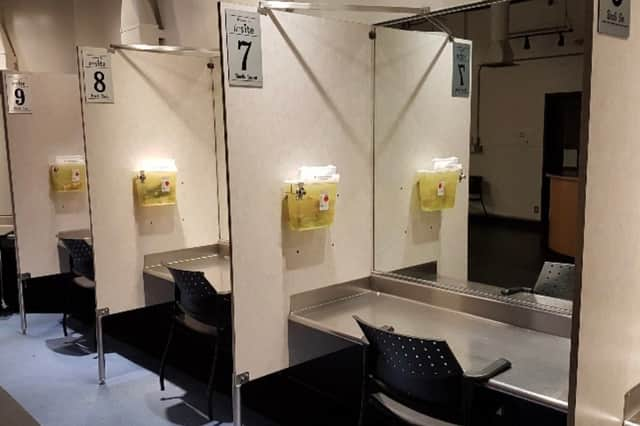Edinburgh drug consumption room backed by study: 'Centres should target drug hotspots'
and live on Freeview channel 276
A study looking at opening a consumption room for illegal drugs in Edinburgh has backed establishing a number of centres in city drug ‘hotspots’ to reduce the rate of fatal overdoses.
Research concluded that providing users with a safer drug consumption facility (SDCF) could help to mitigate “significant levels of drug-related harm” across the Capital. However, further legal advice would need to be obtained in advance of any service being launched to ensure its procedures “remain lawful”.
Advertisement
Hide AdAdvertisement
Hide AdWith “dispersed patterns” of harm across the city it was recommended to take steps to provide consumption rooms – also called overdose prevention centres – in hotspot areas. These were identified as being the Old Town, parts of Leith, Granton, Niddrie, Wester Hailes, Gorgie, Dalry and Fountainbridge.
Setting up such a service in Edinburgh could cost between £1m and £2m a year, according to a “broad estimate” by the researchers, who said evidence showed SDFCs can ultimately result in “overall savings” across health services.
The council and Edinburgh Alcohol and Drugs Partnership (EADP) commissioned a team at Stirling University to undertake the feasibility study in response to the rise in drug-related deaths which have doubled in the Capital over the last decade, hitting a record 113 in 2022.


The work could pave the way for a trial scheme, likely in the city centre, following approval of a pilot consumption room in Glasgow expected to open later this year. Meanwhile the Scottish Government has said it would not look to prosecute users of proposed SDFCs for possession of illegal substances.
Advertisement
Hide AdAdvertisement
Hide AdA report on the findings, published last week at the request of councillors, said rates of drug-related harm across the Lothian region “have consistently been above the national average”. It said patterns of drug use are “varied and dynamic” in Edinburgh, noting a recent “rapid increase” in people injecting cocaine and taking ‘street benzos’ – while injected heroin use “remains a very significant concern and source of considerable harm”.
The report added: “Edinburgh – alongside the rest of the UK – faces the prospect of increased levels of synthetic opioids in the drug supply chain. SDCF provision would clearly provide a key opportunity for harm reduction in this context, as it creates spaces in which inadvertent overdose can be monitored and responded to quickly and effectively.”
Drug users interviewed as part of the research stressed it should be more than “just an injection room” which is “informal and welcoming” and avoids an “excessively ‘clinical’ feel”. Participants said centres should provide access to wider addiction and mental health support services.
Models of safe consumption rooms range from centres set up in existing facilities for people who use drugs – the agreed approach in Glasgow – to a standalone centre in a dedicated, permanent site and a mobile facility which could travel to different areas of the city.
Advertisement
Hide AdAdvertisement
Hide AdCouncillors will meet next month to discuss the report and next steps toward launching a pilot in Edinburgh.
Councillor Finlay McFarlane, who has pushed for the introduction of consumption rooms to help tackle the drug deaths crisis, said: “In Edinburgh it’s not one geographical centre which presents challenges. There are outlying communities that are a long distance from the city centre or Leith which are the two twin centres.
“So there are populations elsewhere in the city that perhaps would need a service that would either come to them or multiple sites. What we’ll need to come up with I think is a proposal that the Lord Advocate can then respond to.
“As the study shows it’s also right that we design a service that’s going to work ultimately. I wouldn’t want to pilot something that would regress the cause for this being rolled out across the country; we have to design a service with the people who will use it in mind that we know will be accessible and will provide opportunities for them to access other services.
Advertisement
Hide AdAdvertisement
Hide Ad“There is no silver bullet in this – we need to look at the whole picture as a whole round. The biggest need is to stop people dying. That should be the most important thing we consider in all of this.”
Comment Guidelines
National World encourages reader discussion on our stories. User feedback, insights and back-and-forth exchanges add a rich layer of context to reporting. Please review our Community Guidelines before commenting.